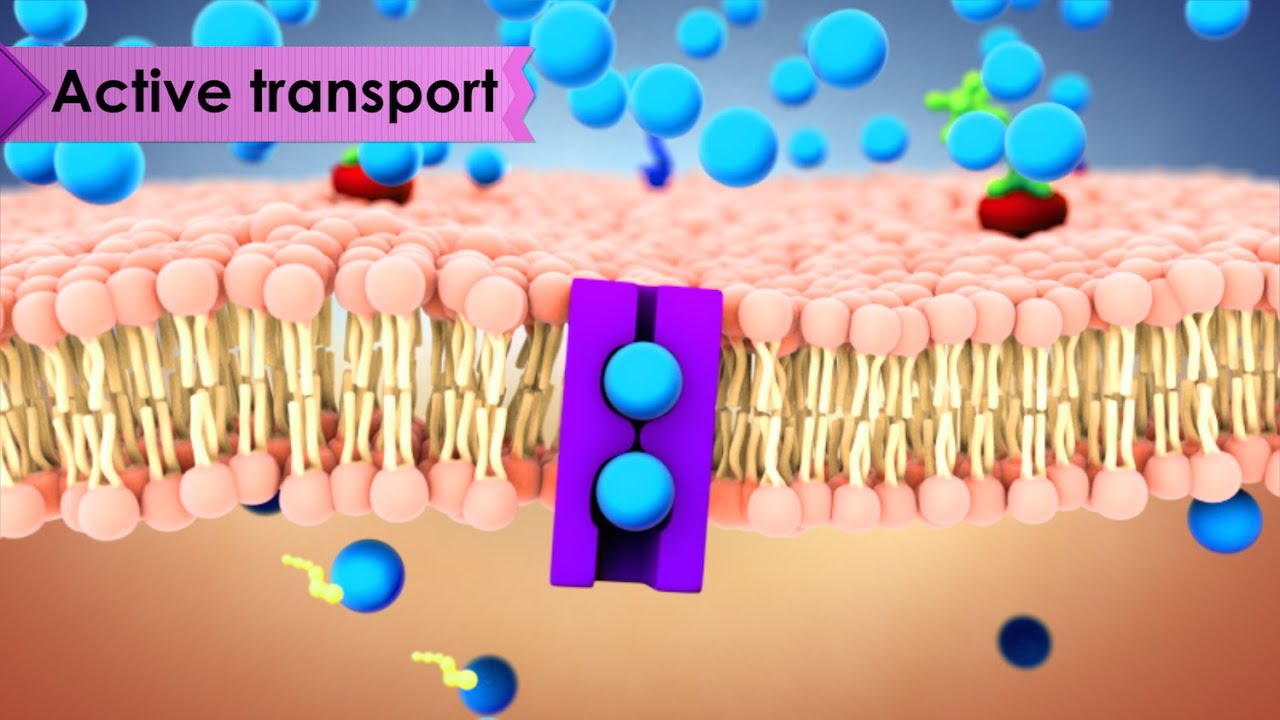How do things move across the cell membrane, either in or out? This animation shows two broad categories of how things pass into or out of a cell: passive transport and active transport.
Passive transport is automatic; no input of energy is required. For example, diffusion is a passive process in which particles move either into or out of the cell from an area of higher concentration to an area of lower concentration.
Active transport, on the other hand, is when particles move from an area of lower concentration to an area of higher concentration. Because particles are moving against the concentration gradient, energy is required.
After viewing this video, the viewer will be able to:
• List the two broad categories of cell transport
• Describe the difference between active and passive transport.
—-
Watch other Nucleus Biology videos:
– Cell Structure: https://youtu.be/URUJD5NEXC8
– Controlled Experiments: https://youtu.be/D3ZB2RTylR4
– Independent vs. Dependent Variables: https://youtu.be/nqj0rJEf3Ew
—-
Learn more about the company that created this video: http://www.nucleusmedicalmedia.com/
source

I hope this channel uploads more videos from the MCAT point of view…..it will really help!!!!
If only this was all you needed to know for the MCAT
You use energy instead of metabolic energy …… Passive transport use actually metabolic activity not only energy
Thanks for the simple and detailed explanation
Thank you well explained
I am the student of Vedanta . I don't want this video
YayEreat video Keep them going Thank your
Make all the parts about cell
Such a nice Chanel
ASLAH MU ALAIKUM
just subscribed very helpful
Please enable Indonesian transtation.. So helpfull for studying in senior high school
apparently the word nucleus is now trademarked?
how do u have trademark on nuclues
I come from Vietnam
i want this video have lyrics
i have a question regarding the cell transportation.. am i just want to ask .."how mitochondria transport ATP to the carrier protein in order for the molecule get outside and inside of the cell membrane from low to high concentration??
BEU den gelenler?
Thats really perfect animation . Thank for video and thank for Turkish translation. I expect new videos come same as this video.
that is useful video ……thankyoooooooooo…………………..
I have a Bio test tomorrow and god bless you for making these videos
BEU DEN SA. KG GENÇLER
Great video, Although it needs a little bit extra pieces of information such as types of diffusion and osmosis etc. Thank you.
روعة بس حاولو تنزلون ترجمة على باقي الفيديوهات وشكرا
needed this
حلووو👏حبيت فكره الترجمه👌وشكرا😘
all of your videos really help the students understand biology better keep up the work
Plz make a video of. Full life of cell in detail.
Nucleus medical media is best for students of bio
VERY NICE …..WHEN I SAW THIS Precision IN Human . THIS Precision IT Impossible TO Come FROM nothing
Very good explanation and well designed animation.
제가 영어 잘못해서 그런데 그 이영상에 오류가 있는것 같습니다 1분 5초부터 막단백질을 통해 세포가 움직이려면 에너지가 필요하지 않는걸로 아는데…
This is just amazing, thanks for the effort you put into doing it